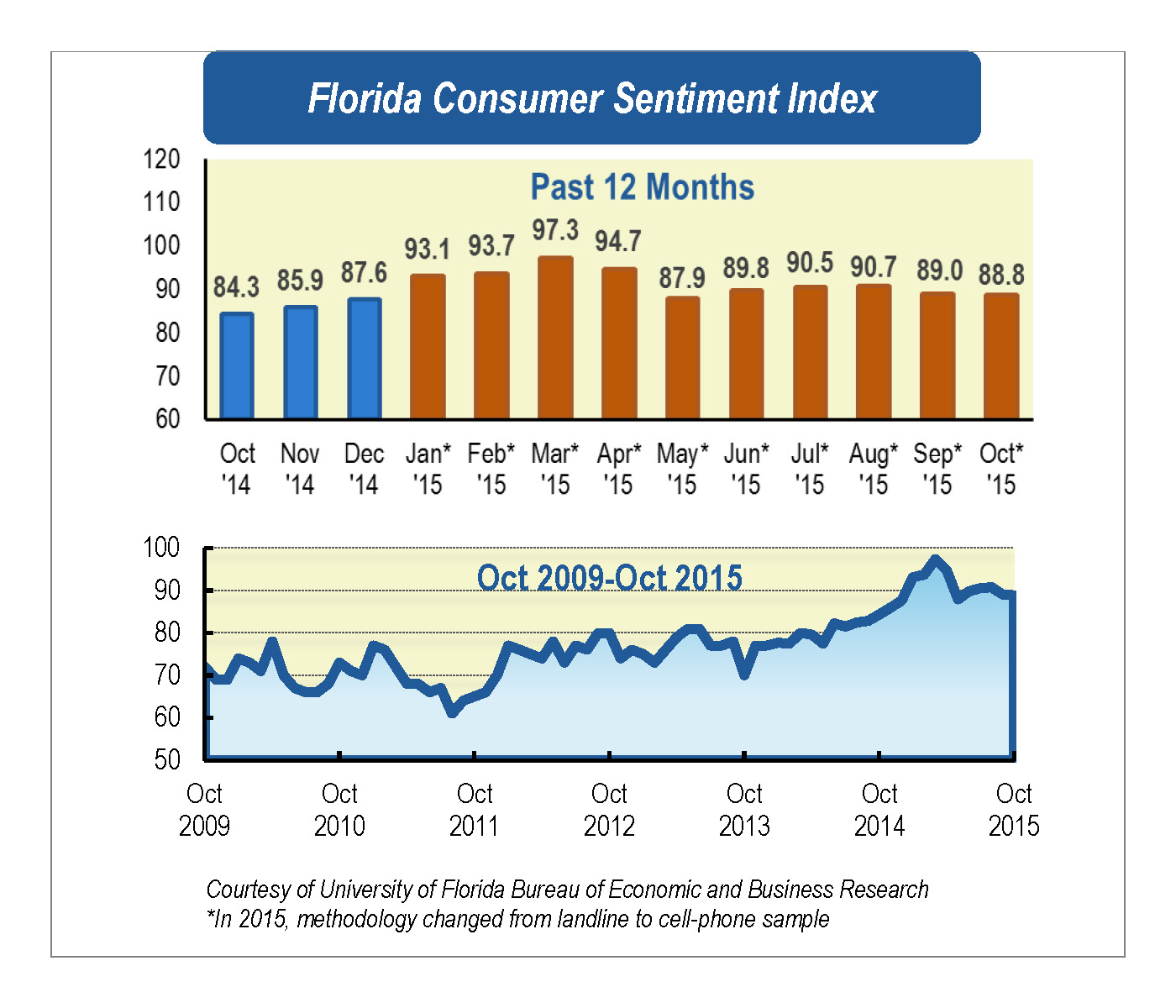
Consumer sentiment among Floridians fell slightly in October to 88.8, down less than half a point from September’s revised reading, according to the latest University of Florida consumer survey.
Among the five components that make up the index, one decreased while two increased and two remained unchanged.
“The greatest decline in the consumer sentiment index was among those with household income less than $50,000 per year while the biggest increase came from those with incomes above that mark,” said Hector H. Sandoval, director of the Economic Analysis Program at UF’s Bureau of Economic and Business Research.
Those respondents with household income under $50,000 were pessimistic about their personal finances: There was a 3-point drop in the perception of personal finances now compared with a year ago, and the expectation of personal finances one year from now declined 4.8 points from last month’s reading.
Overall, the perception of personal finances now compared with a year ago remained unchanged at 81.2, as did expectations of personal finances one year from now at 97.
Views of the national economy were mixed. Anticipation of U.S. economic conditions over the next year fell 2.1 points to 83.2. But expectations of U.S. economic conditions over the next five years increased one point to 86.2.
Opinions as to whether now is a good time to buy major household items such as a refrigerator ticked up three-tenths of a point to 96.5.
Since 2012, Florida’s economy has grown, on average, around 2.3 percent annually, slightly higher than the 2 percent of U.S. economy. Florida’s economic growth rate in 2014 ranked 11th in the country, according to the U.S. Bureau of Economic Analysis. The largest contributors to the growth rate were finance activities, retail trade, and the education and health services sectors.
The Florida unemployment rate declined again in September to 5.2 percent, the lowest since 2008. This decrease has been steady and consistent over the years, since the peak in 2009-10. However, it continues to be higher than the U.S. rate of 5.1.
Compared with last year, the number of jobs added in September statewide was 235,700, a 3 percent increase. The sector gaining the most jobs was leisure and hospitality, followed by education and health services sector, and the trade, transportation and utilities sector.
The housing market continues recovery. Florida home values have increased 7.5 percent over the past year. The number of residential real estate sales during the second quarter of 2015 increased 15 percent compared with the same quarter in 2014. Moreover, the median sales price for single-family homes reached $200,000.
The stock market has been gaining over the past few weeks. Gasoline prices keep falling and are approaching the record-low levels at the beginning of the year.
“Consumer sentiment is significantly higher compared to the same month last year,” Sandoval said. “One can expect holiday sales to perform better than last year.”
Conducted Oct. 1-25, the UF study reflects the responses of 450 individuals who were reached on cellphones, representing a demographic cross-section of Florida.
The index used by UF researchers is benchmarked to 1966, which means a value of 100 represents the same level of confidence for that year. The lowest index possible is a 2, the highest is 150.
Details of this month’s survey can be found at here.
Via the University of Florida News.




